 ♥~♥ LIFE STYLE-Body Modification ♥~♥ One of the newest trends in Body Modification comes in the form of corset piercings. The corset was an undergarment made for women primarily worn in the 1800s. It’s intent was to use a metal brace disguised as lingerie that used a series of hook-and-eye clasps and laces to mold and shape a woman's torso. The desired effect was an hourglass figure that exaggerated the hips and the bust, and a waist size as small as sixteen incredible inches. ♥~♥ LIFE STYLE-Body Modification ♥~♥ One of the newest trends in Body Modification comes in the form of corset piercings. The corset was an undergarment made for women primarily worn in the 1800s. It’s intent was to use a metal brace disguised as lingerie that used a series of hook-and-eye clasps and laces to mold and shape a woman's torso. The desired effect was an hourglass figure that exaggerated the hips and the bust, and a waist size as small as sixteen incredible inches.
Although corsetry has a long history, the corset piercing is of contemporary origin, coming into practice with the establishment of the body piercing industry in the late 1990s. Like corsetry, it is associated with erotic behavior and aesthetics, particularly fetish aesthetics. Also paralleling corsets, most wearers of corset piercings are women.
There is some controversy regarding the publication and promotion of images of corset piercing. Almost all of the photographs of corset piercing are of fresh piercings, which have not had the time to reject, migrate or otherwise fail to heal properly. Images used in advertising or magazines may be photoshopped or airbrushed to eliminate indications of swelling, redness, or infection, further promoting the illusion that these piercings are easy, or even possible to heal. Photographs of corset piercings done with captive bead rings, which are inappropriate for permanent corset piercings, vastly outnumber photographs of corset piercings done as proper surface piercings. Usually corset piercings are photographed laced, also leading the public to believe that they can be worn laced at all times, which is not possible, even in a well healed, permanent corset piercing. Corset piercings, sometimes called ladder piercings, are a series of surface piercings arranged up the back in two vertical columns. The piercing are located in the spot where the eyelets would be if one was wearing a corset. It is a symmetrical piercing with an equal number of holes on each side. As few as four holes can be used (two on each side) up to as many as the expanse of skin will allow. Most people who get corset piercings use standard captive bead rings which a length of ribbon is then laced through. Although ribbon or lace are the most popular materials, rope and chain have also been used at times. While this all looks lovely, it is only intended for temporary use. If kept in, surface piercings such as these that use this type of jewelry will most likely not heal. The rings will migrate around the skin as they are rejected by the body, the wounds will become irritated, and nine times out of ten will leave horrible, unsightly scars all along the back. Sometimes hypodermic needles or bondage/slave rings are used instead with the same effect. To avoid this, the jewelry should be removed promptly after the fun has been had (corset piercings are common in fetish performances) and the pictures have been taken (they are also popular subjects for photo shoots.) Lilly |








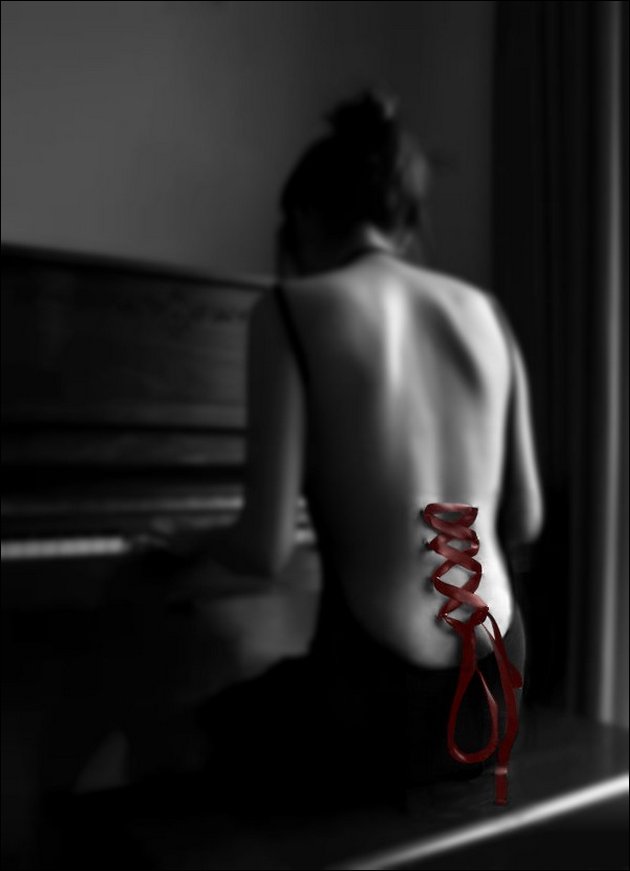
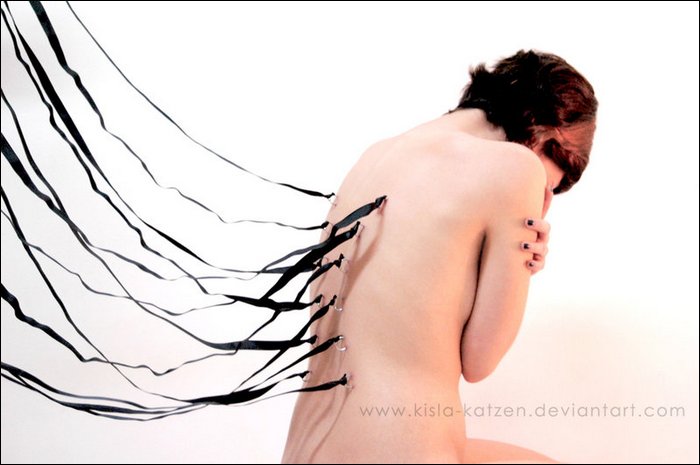
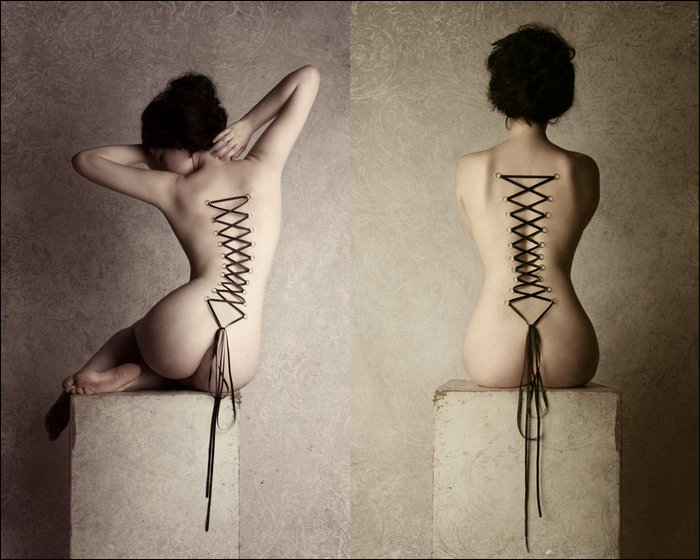
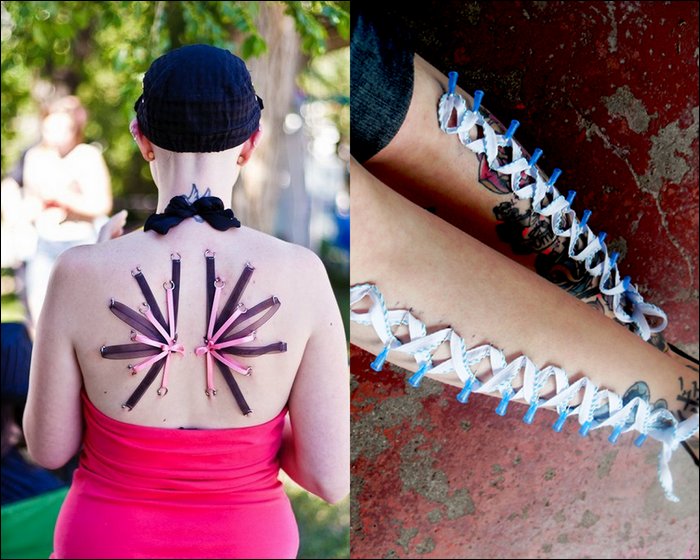
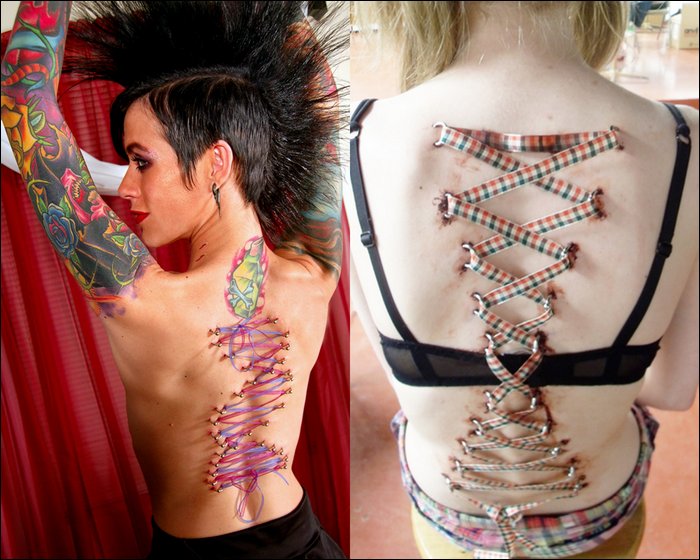
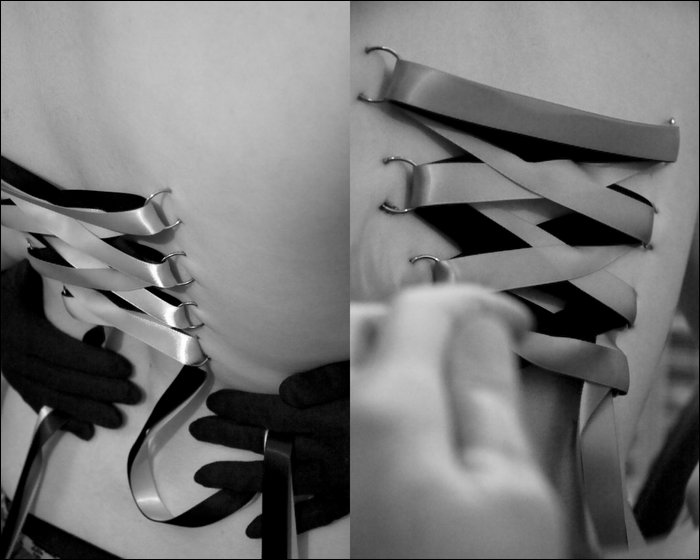
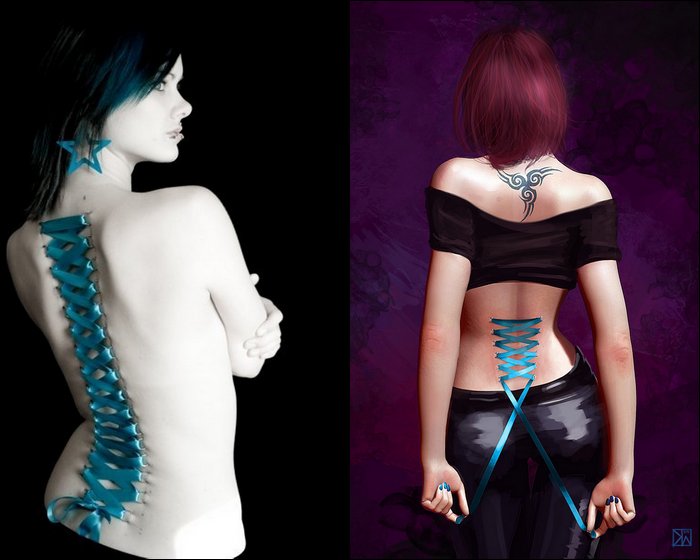
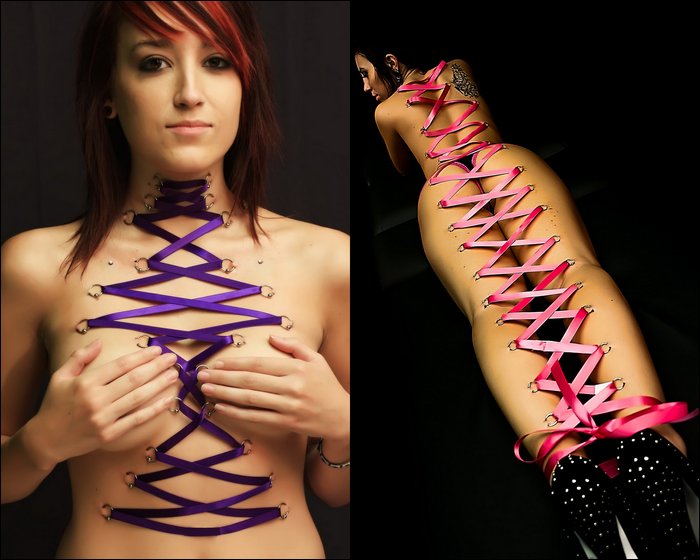
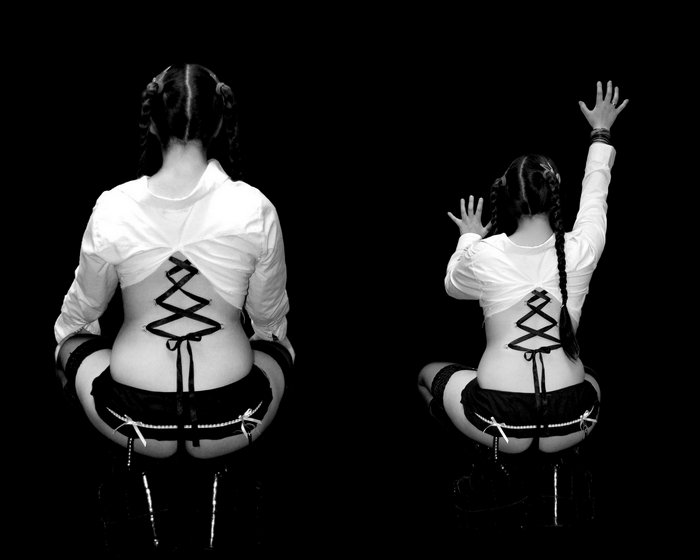
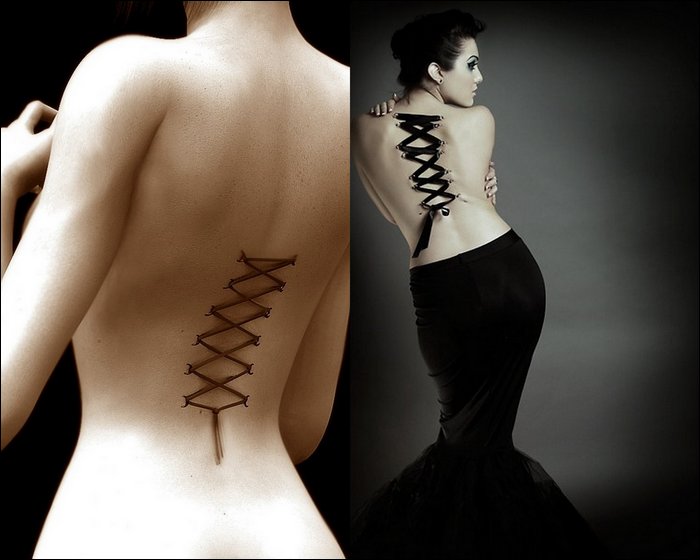
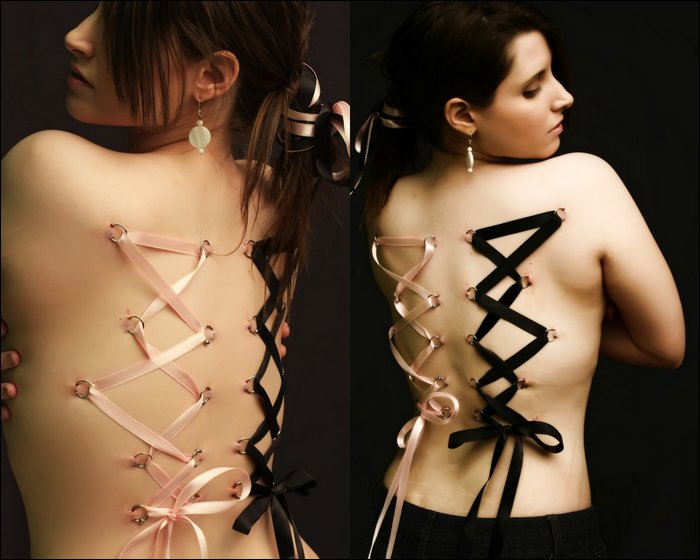
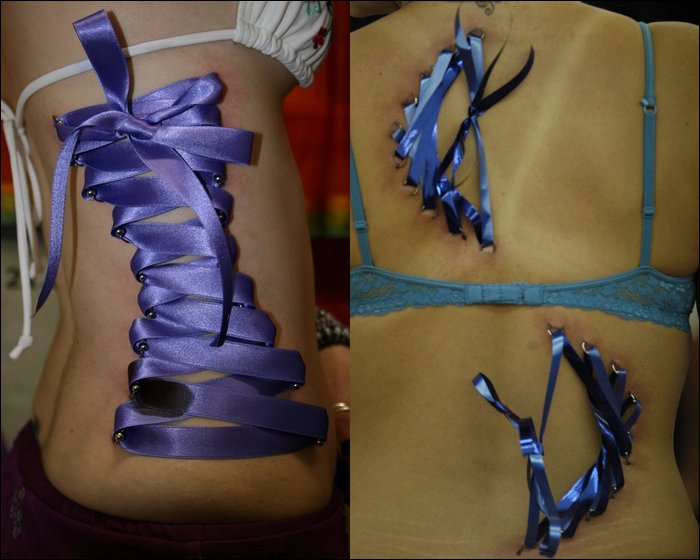
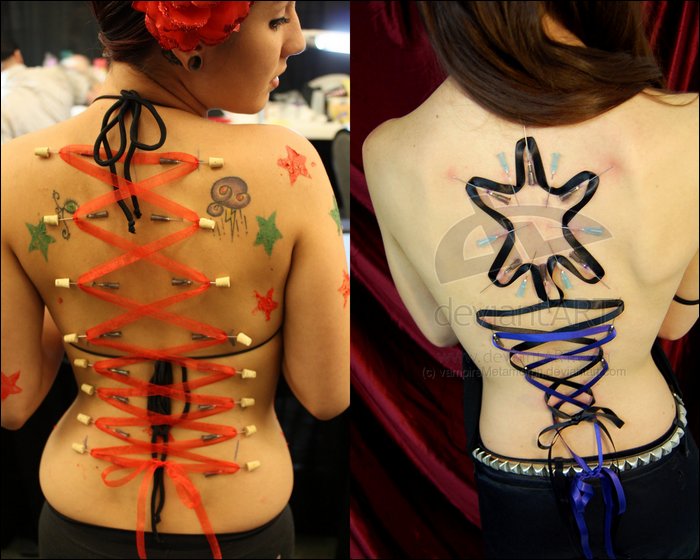











.jpg)
0 comments:
Post a Comment